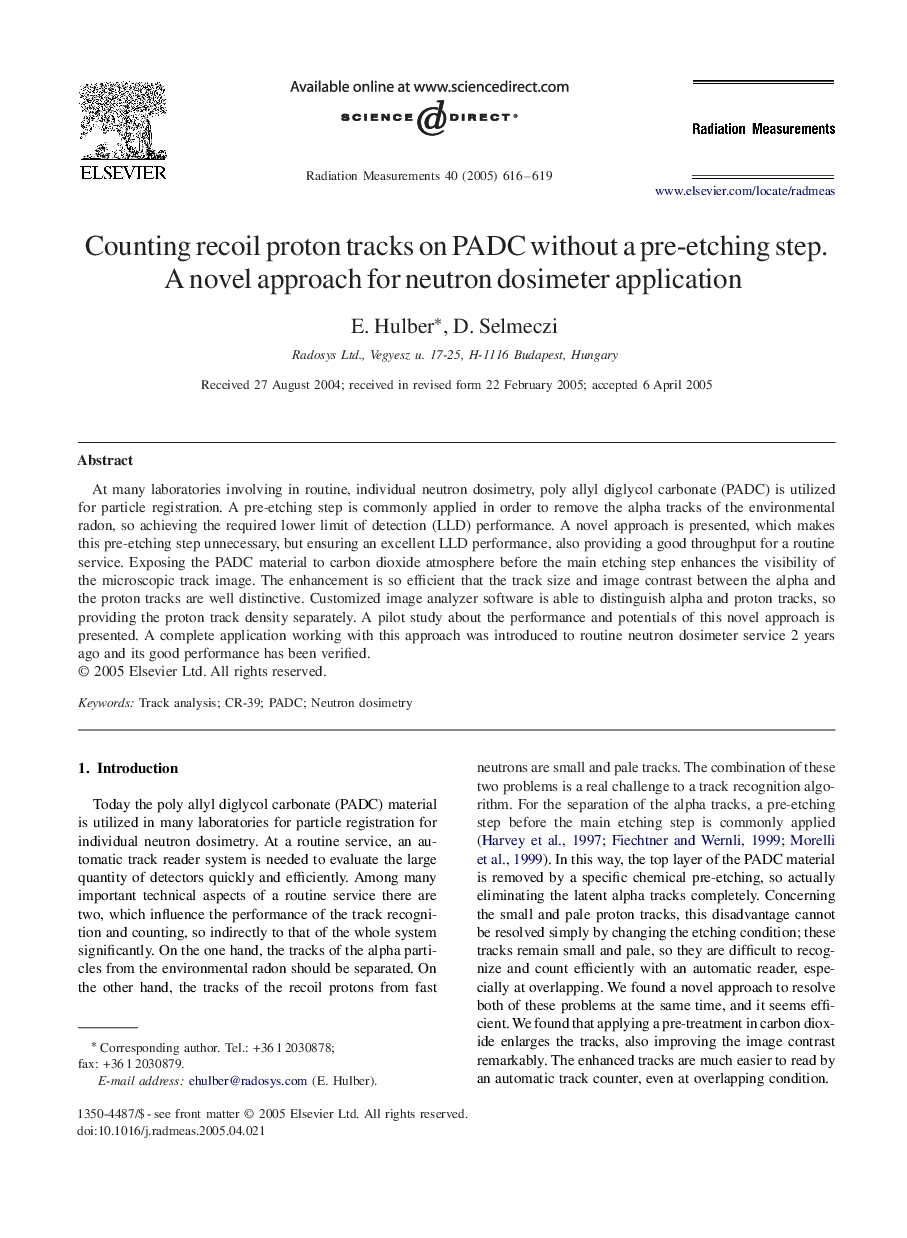| Article ID | Journal | Published Year | Pages | File Type |
|---|---|---|---|---|
| 9875972 | Radiation Measurements | 2005 | 4 Pages |
Abstract
At many laboratories involving in routine, individual neutron dosimetry, poly allyl diglycol carbonate (PADC) is utilized for particle registration. A pre-etching step is commonly applied in order to remove the alpha tracks of the environmental radon, so achieving the required lower limit of detection (LLD) performance. A novel approach is presented, which makes this pre-etching step unnecessary, but ensuring an excellent LLD performance, also providing a good throughput for a routine service. Exposing the PADC material to carbon dioxide atmosphere before the main etching step enhances the visibility of the microscopic track image. The enhancement is so efficient that the track size and image contrast between the alpha and the proton tracks are well distinctive. Customized image analyzer software is able to distinguish alpha and proton tracks, so providing the proton track density separately. A pilot study about the performance and potentials of this novel approach is presented. A complete application working with this approach was introduced to routine neutron dosimeter service 2 years ago and its good performance has been verified.
Related Topics
Physical Sciences and Engineering
Physics and Astronomy
Radiation
Authors
E. Hulber, D. Selmeczi,
